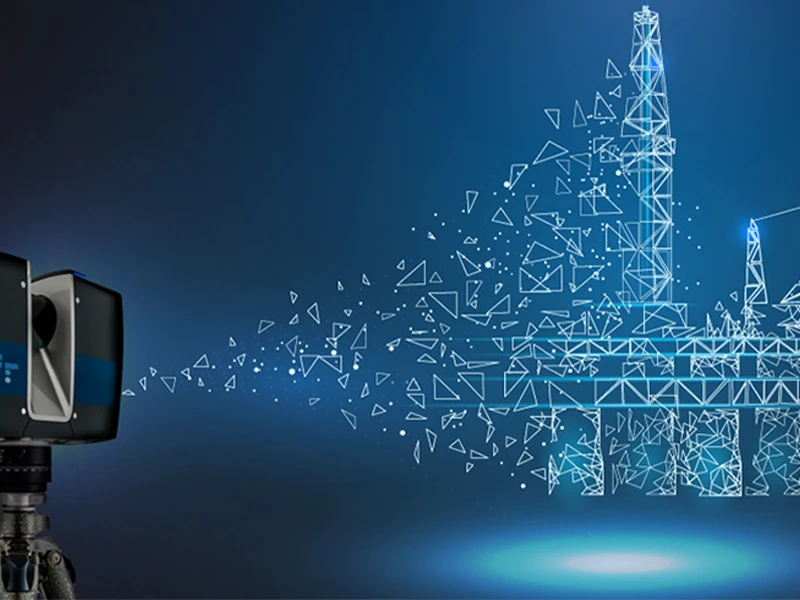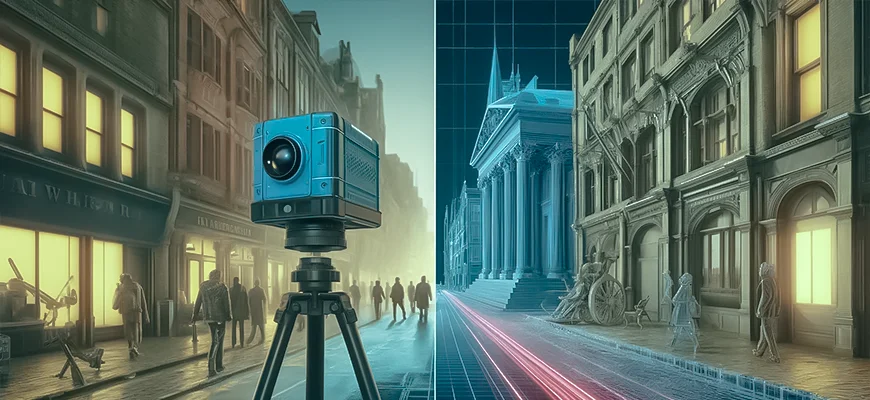

The Versatility of LiDAR and 3D Laser Scanning
LiDAR and 3D laser scanning are closely linked technologies. In both cases, laser light captures precise spatial information. Although LiDAR is a general term used in many different contexts, 3D laser scanning is frequently linked, especially to terrestrial LiDAR, highlighting its ground-based method of obtaining accurate measurements of objects and surroundings.
3D laser scanning and LiDAR (Light Detection and Ranging) are revolutionising how we collect and engage with the physical environment. These technologies cover various areas, from media and entertainment to design and construction, and they are not limited to a specific industry.
LiDAR vs Laser Scanning

1. 3D Laser Scanning
Imagine you’re an architect working on restoring a centuries-old building. Every nook, cranny, and intricate detail matters. At that point, Laser Scanning enters the picture like a painstaking painter with a soft brush. It all comes down to accuracy; laser scanning seizes even the most minor details with unprecedented precision.
As stated, laser scanning is all about precision and accuracy. It picks up every detail, from the intricate carving on a door to the curve of a column. It’s like having a very accurate measuring tape that eliminates all space for speculation.
1.1. Applications of 3D Laser Scanning
Medical industry
Archaeology
Reverse Engineering
1.2. Real World Examples
The Empire State Building
The Panama Canal
The Great Wall of China
1.3. Limitations of 3D Laser Scanning
- Expensive for minor refurbishment projects
- Seasonal Challenges Outdoors
- Challenging in collecting data with occupied buildings
- Integration with Existing Workflows
- Data Processing and Administration
2. LiDAR
Let’s switch gears. Imagine you are a construction engineer assigned to manage the creation of a brand-new urban infrastructure project. You need to grasp the overall environment thoroughly, not just specific buildings or roads. It includes arranging existing structures, traffic flow, and potential obstructions.
Here’s where LiDAR comes into play. It sweeps its laser beams across the building site to produce an intricate topographical map.
In contrast to laser scanning, which focuses primarily on stationary objects, LiDAR applies in dynamic contexts, like autonomous cars, where navigation and obstacle avoidance depend on real-time mapping of external surroundings.
2.1. LiDAR Equipments
Terrestrial, Mobile, and UAV LiDAR are different LiDAR systems that capture three-dimensional data in various environments. Let’s deep dive into each equipment below.
Terrestrial LiDAR
Mobile LiDAR
UAV LiDAR
2.2. Applications of LiDAR Across Sectors
BIM Modeling
Flood prediction
Forensics Detection
Renewable Energy
Limitations
- Costly
- Lousy weather conditions hinder LiDAR function
- The data lacks colour, and RGB photo overlays serve to interpret it.
- Intricate data sets necessitate proficient analysis to understand
📍 Cutting-Edge Surveys for Accurate Results!
At Survey2Plan, we use advanced LiDAR and 3D laser scanning to deliver high-precision data. Contact us today for expert solutions!
📞 0161 531 6641 📩 info@survey2plan.com 💬 Get a Quotation
Fast & Accurate Surveys | Trusted by Architects, Developers & Contractors
Conclusion
In conclusion, while LiDAR and 3D Laser Scanning both utilize laser technology to gather spatial data, they cater to different needs. 3D Laser Scanning is prized for its precision in capturing detailed features, ideal for projects requiring fine detail, such as architectural restoration.
LiDAR, on the other hand, offers a broader scope, suitable for dynamic and large-scale environments like urban planning and autonomous driving. Both technologies significantly enhance the accuracy and efficiency of various professional fields despite their distinct uses and limitations.
If you are ready to elevate your project’s precision with expert 3D laser scanning. Contact Survey2Plan today and let our team of specialists guide you to success.
Previous Post
← How to Find Out if a Building is Listed